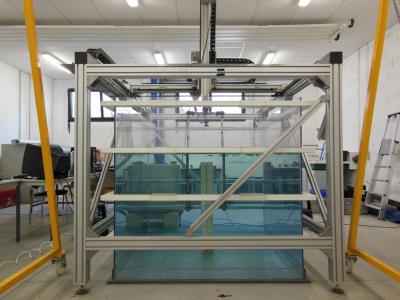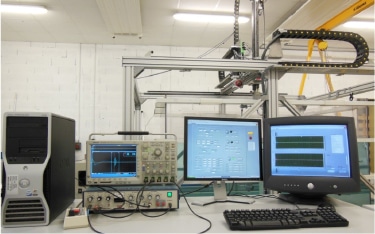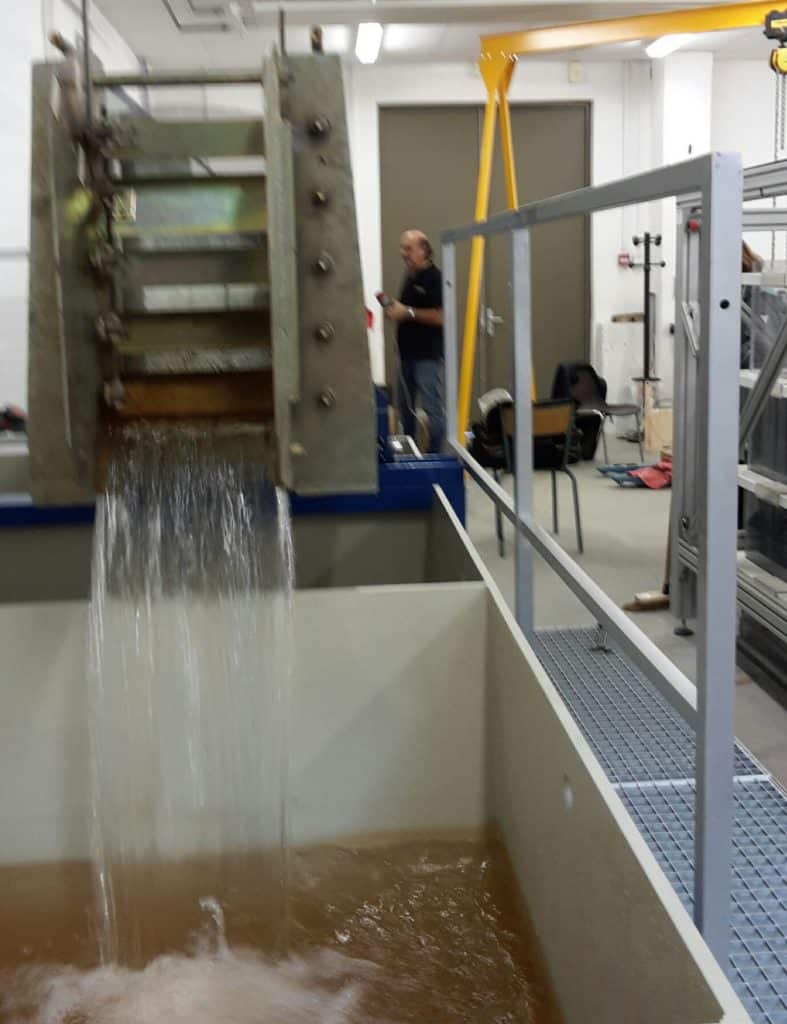Experimental & Acoustic Modelling
The interest of this cluster is that it allows the study of complex wave phenomenaThis is the case when the wavelength is close to the size of the heterogeneities in the case of multiphase porous media, random media or granular media, which cannot be simulated by theory or by numerical models alone.
It also allows the development of specific measurement tools (sonar, Ultra High Resolution sediment sounder, endoscopic probe...) as well as tomography or processing algorithms that can be directly validated in an acoustic tank, through easily reproducible experiments.
The problems considered range fromunderwater acoustics to the marine or land seismicof theslope instability at evolving fractured environmentsenvironments including sedimentary ecosystemss, the media with variable porosities. The advantages of such a laboratory are on the one hand :
. The scaling of geophysical phenomena including chemical, biological or biophysical phenomena (sedimentary ecosystems) that are easily reproducible and inexpensive compared to full-scale studies of offshore campaigns or seismic field exploration
and on the other hand:
. The rapid acquisition of data that can be transposed to those acquired in situ, where complex, evolving wave phenomena can be monitored and studied, taking into account three-dimensional effects.




